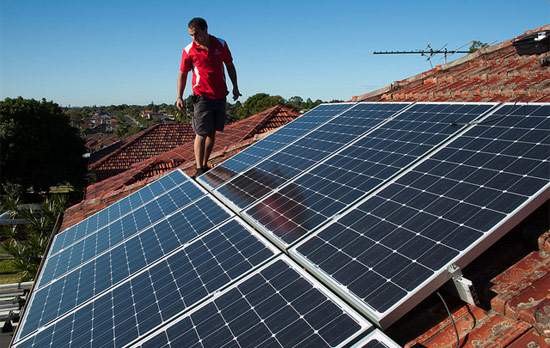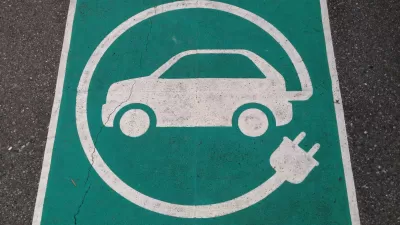Gov. Jerry Brown signed stripped-down legislation that sets a target for the state of generating 50 percent of electricity from renewable sources by 2030 and doubling energy efficiency standards in buildings by the same year.
"The law, signed [Oct. 7] by Gov. Jerry Brown, accelerates California’s shift away from fossil fuels as its dominant source of energy and marks another milestone in the state’s fight against climate change," writes David R. Baker, energy and clean tech reporter for the San Francisco Chronicle.
Credit: Clean Energy Authority.com
“We’ve got to realize that we are here today because of oil — oil and gas, to a lesser extent, coal,” Brown said at a signing ceremony overlooking a hazy Los Angeles from the Griffith Observatory. “What has been the source of our prosperity has become the source of our ultimate destruction, if we don’t get off of it.”
While the state's utilities are clearly on a path toward renewables and away from fossil fuels, the same can not be said for its drivers, notwithstanding the increase in electric vehicles (EVs) on the road. "For the first time since 2006, gasoline consumption in California increased from the prior fiscal year," notes a Dec. 4, 2014 post. " From July 2013 through June 2014, consumption increased 1 percent."
The third element of SB 350 would have addressed that increase by setting a state target of cutting oil consumption in half by 2030, but it proved too controversial for moderate Democrats so it was removed. However, all is not lost as the bill contains a "less noticed section that delivers a big boost for zero-emission vehicles," writes Assemblyman Rich Gordon (D-Menlo Park) in an Opinion for the San Francisco Chronicle.
Electric vehicle provisions in the legislation serve as an alternate, additional and electrifying route toward reducing fossil-fuel dependence and air pollution...The California Public Utilities Commission (CPUC) will soon be determining what role the electric utilities will play in the development of electric vehicle charging infrastructure.
The commission also must allow property owners and not utilities to choose the electric vehicle charging equipment and services best suited for their individual site. Anyone who drives an electric vehicle in California now, or anticipates driving one in California in the future, has something to gain from having a choice when they pull into a parking spot to charge up.
The 50 percent target is not the nation's highest renewable portfolio standard.
Other states have adopted their own renewable power goals, a few of them higher than California’s. This year, Hawaii passed legislation calling for 100 percent renewable electricity by 2045, while Vermont set a requirement of 75 percent renewable power by 2032.
A related bill expands the powerful, 12-member California Air Resources Board (CARB) to include a member appointed by the Senate Rules Committee and one by the speaker of the Assembly. It came as a surprise that Brown signed AB 1288, according to a Sacramento Bee "Capitol Alert".
FULL STORY: Brown signs climate law mandating 50% renewable power by 2030

Planetizen Federal Action Tracker
A weekly monitor of how Trump’s orders and actions are impacting planners and planning in America.

Maui's Vacation Rental Debate Turns Ugly
Verbal attacks, misinformation campaigns and fistfights plague a high-stakes debate to convert thousands of vacation rentals into long-term housing.

Restaurant Patios Were a Pandemic Win — Why Were They so Hard to Keep?
Social distancing requirements and changes in travel patterns prompted cities to pilot new uses for street and sidewalk space. Then it got complicated.

In California Battle of Housing vs. Environment, Housing Just Won
A new state law significantly limits the power of CEQA, an environmental review law that served as a powerful tool for blocking new development.

Boulder Eliminates Parking Minimums Citywide
Officials estimate the cost of building a single underground parking space at up to $100,000.

Orange County, Florida Adopts Largest US “Sprawl Repair” Code
The ‘Orange Code’ seeks to rectify decades of sprawl-inducing, car-oriented development.
Urban Design for Planners 1: Software Tools
This six-course series explores essential urban design concepts using open source software and equips planners with the tools they need to participate fully in the urban design process.
Planning for Universal Design
Learn the tools for implementing Universal Design in planning regulations.
Heyer Gruel & Associates PA
JM Goldson LLC
Custer County Colorado
City of Camden Redevelopment Agency
City of Astoria
Transportation Research & Education Center (TREC) at Portland State University
Jefferson Parish Government
Camden Redevelopment Agency
City of Claremont




























